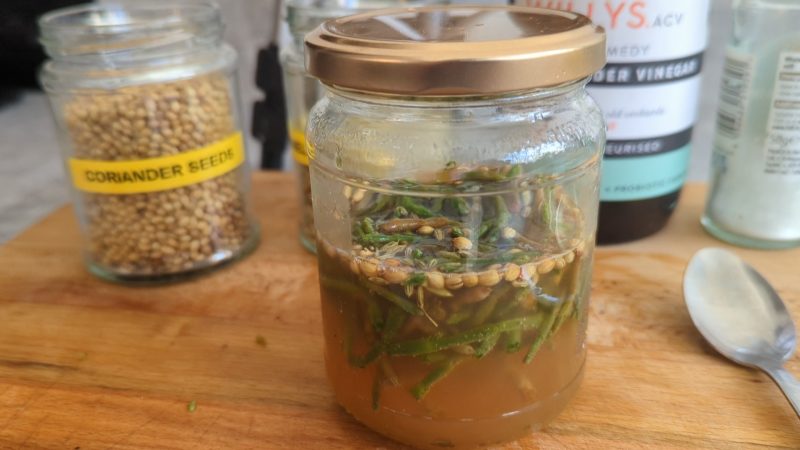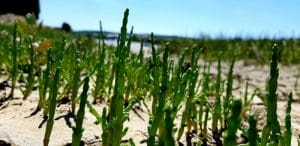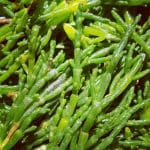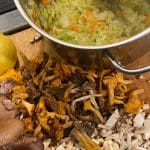Through this post we’re going to be looking at a traditional way to enjoy this fantastic ingredients, pickled Marsh Samphire.
As a food enthusiast and lover of all things natural, I am always on the lookout for unique and flavourful ingredients. One such ingredient that has captured my attention recently is Marsh Samphire. Also known as “sea asparagus,” this vibrant green plant grows in coastal marshes and is packed with a salty, crisp flavour that is reminiscent of the sea.
Today, I want to introduce you to the world of Marsh Samphire and share with you a delicious recipe for pickling this delightful ingredient.
Benefits of Foraging for Marsh Samphire
Foraging for Marsh Samphire not only exposes you to the beauty of nature but also provides numerous health benefits. This unique plant is rich in essential minerals like calcium, magnesium, and potassium, which are vital for maintaining a healthy body. Additionally, Marsh Samphire is a great source of vitamins A and C, which boost your immune system and promote healthy skin.
Furthermore, foraging for Marsh Samphire allows you to connect with your environment and appreciate the beauty of coastal ecosystems. As you navigate through the marshes, you’ll encounter a variety of other plant species, birds, and marine life, creating a truly immersive and educational experience.
My Pickled Marsh Samphire Recipe Video
A Step-by-Step Guide to Pickling Marsh Samphire
Now that you understand the allure of Samphire, let’s dive into the process of pickling this delectable ingredient. Follow these simple steps to preserve the taste of nature in the form of pickled Samphire:
- Gather fresh Marsh Samphire: Start by heading out to your nearest coastal marshes during low tide. Look for vibrant green plants growing in the muddy marshes. Ensure that the Samphire is fresh and not wilted.
- Clean and trim the Samphire: Once you have gathered a sufficient amount, rinse it thoroughly under cold water to remove any dirt or mud. Carefully trim off any tough or woody stems, leaving only the tender shoots.
- Prepare the pickling brine: In a large saucepan, combine equal parts water and white vinegar. Add a pinch of salt, sugar, and your choice of pickling spices, such as mustard seeds or dill. Bring the mixture to a boil, stirring occasionally to dissolve the salt and sugar.
- Trim the Samphire: Remove any stringy bases so you are left with just the succulent crunchy tops.
- Pack the into jars: Using clean, sterilised jars, tightly pack the blanched Samphire into the jars, ensuring that there is minimal air space. Pour the hot pickling brine over, completely covering the shoots.
- Seal and store: Seal the jars tightly and store them in a cool, dark place for at least two weeks to allow the flavours to develop. Once opened, refrigerate and consume it within a month for optimal taste.

Delicious Recipe Ideas Using Pickled Marsh Samphire
Now that you have your very own pickled Marsh Samphire, let’s explore some mouthwatering recipes that showcase the unique flavours of this delectable ingredient. Here are a few ideas to get you started:
1. Pickled Marsh Samphire and Smoked Salmon Salad
Combine thinly sliced smoked salmon, pickled Marsh Samphire, and a variety of fresh salad greens in a large bowl. Drizzle with a light lemon vinaigrette and toss gently to coat. This refreshing salad is perfect for a light lunch or as a starter for a seafood-themed dinner.
2. Pickled Marsh Samphire Crostini
Toast slices of crusty baguette until golden brown. Spread a layer of creamy goat cheese on each slice and top with a few strands of pickled marsh samphire. Garnish with a sprinkle of freshly ground black pepper and serve as an elegant appetiser at your next gathering.
3. Pickled Marsh Samphire and Grilled Fish Skewers
Alternate chunks of firm white fish, cherry tomatoes, and pickled Marsh Samphire on skewers. Brush with a marinade of olive oil, lemon juice, and minced garlic. Grill the skewers over medium-high heat until the fish is cooked through and the Samphire is slightly charred. Serve with a side of lemon rice for a delightful summer dinner.
Safety Precautions When Foraging for Marsh Samphire
While foraging for Marsh Samphire can be an exciting and rewarding experience, it is crucial to prioritise your safety and the preservation of the environment. Here are a few safety precautions to keep in mind:
- Observe local regulations: Familiarise yourself with the regulations and guidelines regarding foraging in your area. Some marshes may have restrictions or protected areas that should be respected.
- Wear appropriate footwear: Marshes can be muddy and slippery, so wearing sturdy waterproof boots or shoes with good traction is essential to prevent accidents.
- Avoid over-harvesting: Only pick what you need and leave enough of the plant to regenerate. Over-harvesting can disrupt the delicate balance of the ecosystem.
- Beware of wildlife: Be mindful of your surroundings and watch out for any wildlife that may inhabit the marshes. Respect their habitats and do not disturb nesting or breeding areas.
Where to Find Marsh Samphire for Foraging
Now that you are eager to embark on your Marsh Samphire adventure, you may be wondering where to find this delightful ingredient. Marsh samphire is commonly found in coastal areas with salt marshes or tidal flats. Look for marshes near estuaries or areas with a mixture of saltwater and freshwater. Some popular locations include coastal regions in the United Kingdom, France, and the northeastern United States.

Find more amazing Wild Food recipes here:











